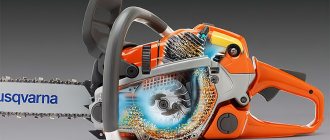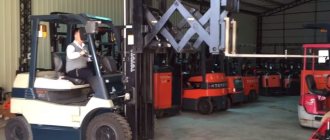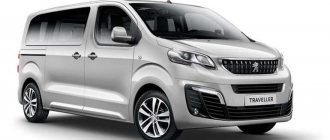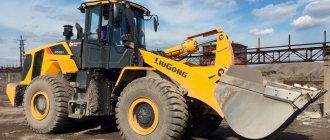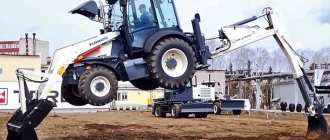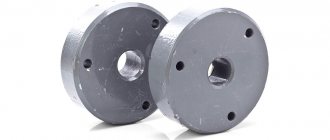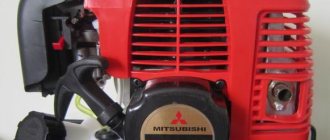Universal loader
A truck equipped with a crane-manipulator has long become a common sight at almost any construction site. Without this special equipment, it is difficult to imagine the loading, transportation and subsequent unloading of various building materials - pallets with bricks, cement and paving slabs, machine tools, change houses and much more. As a full-fledged replacement for a truck crane, machines with CMUs as “universal loaders” are used for repair and restoration, road, pipe-laying, landscaping work, in low-rise construction, as well as in cramped areas where a conventional truck crane simply cannot turn around.
A crane-manipulator installation is a lifting device that includes boom working equipment, load-handling elements, a control system, and a support frame. This type of equipment is intended for use in loading and unloading operations and can be installed permanently or on a vehicle chassis, designed and assembled from scratch or re-equipped on the basis of standard machines - this possibility is available. Loading cranes are divided according to the load moment - the ratio of the load capacity and the reach of the boom of the device, this parameter is measured in tons per meter and is divided into light models - up to 10 tm, medium - up to 22 tm and heavy class - everything above 22 tm.
Based on the type of folding, there are two types of crane-manipulator installations: with a Z- and L-shaped boom. The Z-shaped design is typical of European manufacturers and has articulated parts, which allows it to be folded into several bends. It is usually mounted both behind the car cabin and on the rear overhang of the body. The advantages of this scheme include compactness - in the transport position it allows you to fully use the entire volume of the body, and the presence of several retractable knees ensures the delivery of goods to hard-to-reach places, for example, through obstacles or to the upper floors of a house under construction.
Manipulators of this type are especially effective when working with large-sized cargo, however, it should be taken into account that when using a vehicle with a crane mounted behind the cab, the front axle of the truck may be overloaded, and some space is required around the crane to expand and fold the boom, which makes working in close proximity difficult from the crane column. The L-shaped design is more common among Asian and North American manufacturers. A CMU of this type is mounted behind the cab and consists of a straight telescopic boom and is equipped with a hook suspension, and in the transport position it is unfolded and secured along the longitudinal axis of the truck.
The advantages of the L-shaped layout include the fact that the weight of the installation itself is better distributed between the front and rear axles of the vehicle compared to CMUs built according to a Z-shaped layout. CMUs with an L-shaped boom are more productive, and when moving loads at boom lengths over 6 m, they ensure high accuracy and strict verticality of lifting and lowering loads. This arrangement also allows you to work both through an obstacle, for example, through a fence, and below ground level, for example in wells or trenches. Among the disadvantages, it is worth noting that since the boom with the telescopic part is long, during transportation it is located above the body, reducing its useful volume and limiting the height of the transported goods. It is advisable to use vehicles with a CMU of this type for work with small but heavy loads.
One of the varieties of hydraulic manipulators is hydraulic manipulators - in them, unlike standard crane-manipulator installations, the load gripping elements are hydraulically driven and equipped with attachments, such as a grab or a log grab; they are used where it is necessary to reload bulk materials or timber.
Crane manipulators
A loader crane is a machine designed to perform loading and unloading operations and (in most cases) further transportation of goods.
Contents of the review
- 1. What is a crane?
- 2. Operating principles of cranes
- 3. Application
- 4. Replaceable working bodies
- 5. The most important technical characteristics
- 6. Classification by load capacity and load moment
- 7. Boom equipment for manipulator cranes
- 8. Control system
- 9. Outriggers
- 10. Security system
- 11. What can the crane-manipulator installation be placed on?
- 12. Largest manufacturers of loader cranes
- 13. Conclusion
Brief information
The loader crane is a cross between a conventional automatic crane and a truck. Thanks to this technology, the most complex installation, construction and excavation work is carried out.
It is worth noting that any crane is considered an expensive pleasure, since its complex design, as well as further operation, involves a lot of financial costs. As a rule, professional machinists are hired to operate such equipment. If the crane has sufficient power and a specially trained person is behind the wheel, then the described machine can perform the following tasks:
- Raise construction workers to great heights. In this case, there must be a special cage at the construction site or work area.
- Install various structures and double-glazed windows. For the last option, you need to get a vacuum suction cup.
- Lift heavy loads to heights.
- Drill water wells using auger drills.
- Transport construction materials of almost any weight.
- Load and unload heavy equipment, construction materials, and household waste.
What is a crane?
The main component of the machine is the crane-manipulator unit (abbreviated as CMU), which can be placed on the base of the vehicle or permanently. The mass of the CMU is usually no more than 20-25% of the payload capacity of the base vehicle, which guarantees the effective operation of the latter when delivering goods. The CMU itself is a lifting device, which consists of:
- working boom equipment,
- support frame,
- load-handling device (usually a hook suspension),
- control and security systems.
The introduction of this special equipment into operation makes it possible to significantly simplify loading and unloading by eliminating the use of loaders and reducing the number of special equipment units involved. Combining a base vehicle and a CMU in one vehicle contributes to significant savings in financial and time costs and increases the speed of cargo delivery.
Figure 1. Main components of the crane
What do we offer
Active use of manipulator cranes of any type is accompanied by increased wear of their components and parts. KranAvtoZapchast LLC carries out regular deliveries of spare parts for branded special equipment. In our company you can purchase products manufactured for the repair and restoration of equipment from the following brands:
- Unic
- Tadano
- Soosan
- Dong Yang
- Kanglim
- Hiab
The list of popular products includes original spare parts. All parts and assemblies have certificates. The quality meets the standards of crane manufacturers. Replacing worn or broken structural elements with spare parts purchased from us will restore the functionality of expensive equipment with minimal loss of time.
Engineers will help you choose a product based on its characteristics, provide useful information on servicing special equipment, as well as on steps to restore it.
We will deliver your purchase to any location in the country. Favorable purchasing conditions, discounts for regular customers and high-quality customer service are the characteristic features of our company! Place your order now, don’t waste time searching on your own!
Operating principles of cranes
The most widely used these days are cranes mounted on a vehicle chassis, the main advantage of which is their versatility. “I load it myself, I drive it myself” - this phrase is the easiest way to describe this car. The vehicle on the basis of which the CMU is mounted essentially performs the functions of two pieces of equipment at once: a truck crane and a vehicle for transporting cargo.
Figure 2. A truck-based crane successfully replaces two vehicles at once
It happens that a truck crane is unable to perform its assigned function due to its large size. In this situation, a crane can also be a worthy alternative.
Maintenance and repair of cranes
Repair of loader cranes purchased from us is also included in the list of services we provide. Our company’s employees are competent specialists who regularly improve their skills. They will quickly and accurately determine the cause of the breakdown and fix it as quickly as possible.
In addition, we can also undertake maintenance of your equipment, which includes regular technical inspections and selection of consumables and spare parts that meet operating conditions.
Application
The machine ideally copes with the mechanization of loading and unloading operations, and therefore can be used for lifting, loading and further transportation of both single objects and cargo located on pallets and pallets, as well as in containers. With the help of these machines, you can successfully transport small-piece cargo, machine tools, change houses, glass, logs and other long items, metal scrap and even cars that are in faulty or emergency condition. In addition, such machines are widely used in the following cases:
- when performing installation and high-altitude work;
- in low-rise construction;
- in public utilities;
- when performing repair and restoration work;
- when carrying out work in cramped conditions.
Replaceable working bodies
Often, replacement equipment is included with cranes. Examples include hydraulic grips for containers and piece goods, grabs, which are in demand when loading small pieces and bulk materials, a cradle for lifting people, grips for rolls, fork lifts for pallets, load grips for curbstones and many others. etc.
Figure 3. The modern market offers a wide range of replaceable working bodies for manipulator cranes
The most important technical characteristics
The areas of use and cost of different models of loader cranes depend on the following indicators characterizing this equipment:
- minimum and maximum values of the CMU boom outreach;
- load capacity at minimum and maximum values of the CMU boom outreach;
- load moment of the boom at the same radius parameters;
- height of lowering and lifting the load;
- suspension type;
- the minimum possible turning radius of the CMU;
- type of cross section of the arrow (the greater the number of edges, the stronger the arrow will be);
- a type of telescopic extension system (boom sections can be extended sequentially or in random order).
For manipulators made on the basis of a cargo vehicle, important operational indicators are the load capacity of the base vehicle, the dimensions of the loading platform (the maximum dimensions of the transported cargo directly depend on them), the outriggers (supports) used, the quality of workmanship and type of which have a significant impact on the maximum weight of the cargo , lifted using the CMU, and the safety of the latter.
When considering the possibility of purchasing or renting a particular model of loader crane, you should familiarize yourself with its load-height diagram (an example is shown in the figure below), which clearly demonstrates all the capabilities of the lifting installation, allowing the potential buyer (user) to obtain its most adequate assessment based on the totality of the parameters discussed above .
Figure 4. An example of a load-height diagram for a crane-manipulator model LV 220-01
Classification by load capacity and load moment
Depending on the load capacity, CMUs are conventionally divided into the following 3 classes:
- up to 1 ton (this class includes machines called micromanipulator cranes);
- from 1 to 10 tons (medium-capacity cranes);
- more than 10 tons (heavy cranes).
Figure 5. The actual maximum weight of the lifted load depends on the reach of the crane boom
However, lifting capacity is somewhat a subjective indicator, since its value does not reflect the dependence of the actual maximum weight of the load being lifted on the boom reach. Therefore, it would be more correct to talk about the cargo moment. This parameter is the product of two factors: boom radius and CMU load capacity. The units of measurement for this indicator are kNm (kilonewton per meter) and tm (ton per meter). As such, there is no generally accepted classification of CMU for this parameter. For this reason, you can rely on the experience of enterprise developers. For example, the Austrian manufacturer Palfinger classifies its own machines into 3 groups:
- light class (load moment no more than 3.9 tm);
- middle class (load torque ranging from 4 to 29.9 tm);
- heavy class (load moment in the range from 30 to 150 tm).
A different classification of CMU models is offered by the Swedish manufacturer of special equipment HIAB, dividing its machines as follows:
- light class (load moment less than 10 tm);
- middle class (load moment from 10 to 22 tm);
- heavy class (load moment – 22 tm or more).
Boom equipment crane-manipulators
Depending on the type of suspension used, cranes with boom equipment are distinguished with a hinged (rigid suspension) and rope (flexible suspension) design. In the case of a flexible suspension, the load is captured using a load hook, which is located at the end of the winch. Well, the rigid suspension provides for the hinged placement of the hook on the boom head.
Depending on the type of folding, CMU boom equipment is divided into 2 types:
Being folded for cargo transportation, the KMU boom equipment is shaped like the corresponding letters of the English alphabet.
Z-boom cranes
The Z-shaped boom shape is typical for loader cranes produced under many European brands. Often this design is called “cranked” or articulated. In this case, the boom equipment is folded into several bends. On a cargo vehicle, the CMU of this type can be installed behind the driver’s cab or on the rear overhang of the body. During the transportation of cargo, this structure is located across the frame of the base vehicle.
Figure 6. Model SQ16ZK4Q crane with Z-type boom
The main advantage of Z-type boom equipment is its small size. During the delivery of goods by a vehicle with such a CMU, the working volume of the body is used as fully as possible. Thanks to the use of several elbows, these installations make it possible to deliver certain cargoes to various hard-to-reach places, overcoming obstacles, for example, to the floors of buildings under construction.
This design also has its drawbacks. These include: the possibility of significant overload of the front axle of the vehicle (if the CMU is mounted behind the driver's cabin of the base vehicle), the need to use a powerful and, accordingly, expensive chassis, as well as the difficulty of loading and unloading work in close proximity to the crane column ( To fold and unfold the boom equipment, sufficient free space must be cleared around the CMU).
However, thanks to the ability to use a wide variety of attachments, articulated cranes are capable of solving a huge number of different tasks. The maximum efficiency of their use is achieved when performing work with large loads and solving various special tasks.
L-boom cranes
L-shaped boom equipment has become widespread on loader cranes produced by manufacturers from Japan, South Korea and North America. In this case, the CMU is equipped with a straight telescopic boom and a rope suspension of the hook. When installed on the base of a cargo vehicle, the main part of the CMU in the folded state is installed above the body (along the frame of the vehicle) or the driver’s cabin. When choosing L-shaped boom equipment, you should pay special attention to the operational parameters of the winch installed on it.
Figure 7. L-boom crane in operation
The main advantages of using L-boom cranes are:
- partial redistribution of the weight of the hydraulic unit onto the rear axle of the base vehicle, reducing the likelihood of overloading the front axle;
- higher productivity compared to Z-shaped structures in the case of lifting and lowering loads at high boom radii (up to 6-8 meters);
- higher precision of work, ensured by the use of a cable suspension of the hook, which allows the load to be moved along a straight path, without deviations.
The disadvantages of L-shaped CMUs include:
- restrictions imposed on the transportation of high loads in the body and loading of bulk materials “with a slide” (when the CMU equipment is located above the body);
- impossibility of performing work if there are any obstacles to the free movement of the boom.
The most appropriate use of cranes with L-shaped boom equipment is when carrying out work with heavy but compact loads.
Criterias of choice
To successfully select a crane, you need to carefully study its functionality, technical characteristics and design features. However, first of all, the following rules should be observed:
- When purchasing, you need to pay attention to the turning angle. This characteristic ensures mobility and mobility during construction work. It is worth noting that some manufacturers produce models with unlimited angles. However, such machines are quite unpredictable, especially if we are talking about an area with poor stability. When operating a crane in such a place, you need to be wary of uncontrolled boom rotation, because unstable areas create large load differences.
- When purchasing, you need to make sure that the boom extends sufficiently from the car body - the indicator should be at least one meter. Of course, such equipment will not be able to lift a heavy load, since to perform this task you will need a machine whose boom reaches 5-6 meters. There are models whose boom length reaches 8 meters. This technique is capable of lifting loads weighing over 30 tons.
- Ultimately, functionality matters. You should also definitely choose a crane that will not perform the task with creaking and overload. Otherwise, the CMU will last a rather short period of time. If the intended job involves lifting heavy loads, then it is necessary to purchase equipment that will lift heavy objects using 75-80% of the total power.
Having understood the basic rules for choosing a crane, you need to familiarize yourself with the design features that will ensure the successful completion of the work.
Chassis
Considering the design of the loader crane, it becomes clear that this equipment can be installed on any construction machine. However, in such cases, the machine will operate with minimal maneuverability and stability on the construction site. To avoid undesirable consequences, it is better to get a special tractor or flatbed truck. The cost of this hybrid will be higher, but high performance and lifting heavy loads are guaranteed.
The first thing you need to do is study the carrying capacity of the machine. Loader cranes that will lift, for example, 10-15 tons are not recommended for installation on light trucks. Otherwise, the lifting equipment will simply tip over. The described factor also has a downside - you should not take heavy lifting chassis if the work involves transporting or lifting household appliances.
Arrow
You need to pay attention to the boom based on what types of work will be carried out. Any modern crane-manipulator has a face value of 2-8 units. Naturally, the more edges there are in the boom, the more the machine can lift, and the more it will cost. Accordingly, for greater reliability and power, an 8-sided crane would be an ideal option, and for lifting small weights, a 2-sided crane.
Winch
Those cranes that have a built-in winch have a huge number of advantages compared to conventional cranes. First of all, it is worth noting the manual reduction in the weight landing speed. This function is simply necessary in cases where work is carried out with fragile materials.
How long the winch cable will be depends on the type of work being carried out. If any load is lowered into a deep hole, then a long rope will be needed to successfully carry it out. However, the cost of this element will be too high, so before purchasing you need to carefully consider the nature of future work.
Control system
The control system in machines of this type is usually represented by a set of levers, each of which is responsible for a specific action, be it raising the boom, extending outriggers, raising or lowering the cable, etc. Often the controls are located at the base of the boom on both sides of the base of the CMU .
However, it is not uncommon for manufacturers to place these arms at the top of the boom base where the operator's seat is located. Models of cranes produced today are often equipped with remote control panels that allow you to control the operation of the cranes from a distance.
Figure 8. Crane control system
Manufacturers of cable CMUs:
The Asian countries of South Korea, Japan, and China are traditionally considered to be producers of cable CMUs. The exception is the Swedish HIAB, which located its assembly production in South Korea.
There are about 50 companies producing CMU in Asian countries. The most famous and stable of them are considered to be such CMU brands as KANGLIM, SOOSAN, DONGYANG, CS MACHINERY, HIAB, DONGHAE, JUNJIN, DASAN, HORYONG, UNIC, TADANO, XCMG
Outriggers
Outriggers are retractable supports that are installed on the ground during loading and unloading operations, thereby ensuring the necessary stability of the base machine. Loader cranes use outriggers that differ in the method of extension, which can be mechanical or hydraulic.
In the first case, the outriggers are extended manually. After installation on the ground, the outriggers are fixed in the desired position.
The hydraulic method of extending outriggers involves the use of compact hydraulic cylinders driven by a hydraulic motor of a manipulator crane. Outriggers of this type are equipped with cranes with high lifting capacity.
Conclusion
The best manufacturers of loader cranes are considered mainly foreign companies. If your financial situation allows you to purchase reliable and high-quality equipment, then you should give preference to Japanese and German products. Also, when choosing construction equipment, you need to take into account design features, characteristics and functionality.
This rating is not advertising in nature and is compiled for informational purposes only. You should always consult a professional before purchasing construction equipment.
What can a crane-manipulator installation be placed on?
The choice of the type of chassis on which the CMU is placed depends on where the equipment is planned to be used and what tasks are intended to be solved with its help. The following types of cranes are available on the modern market:
- pneumatic;
- on a special automobile chassis;
- tracked;
- with short wheelbase;
- based on a caterpillar or wheeled tractor;
- rail (mounted on a support platform that moves along rails on wheels);
- adjustable;
- mounted permanently on a foundation (for example, on a technological site);
- placed on boats, floating platforms, etc.
Figure 9. Loader cranes with different chassis look very different from each other
In the vast majority of cases, vehicle-based cranes have an on-board platform without an awning, since otherwise the loading procedure using a crane is not possible.
Figure 10. A truck with a CMU and an onboard platform without a tarpaulin - this is what a typical representative of loader cranes looks like
Gas onboard vehicle with CMU
Due to its relatively small size, this technique has found application in sectors of the national economy and construction organizations. As a rule, medium or small class crane installations are located on the base of the vehicle, and the presence of an onboard body allows the vehicle with a crane to be used for transporting auxiliary cargo.
From us you can buy an onboard vehicle with a CMU of any carrying capacity and configuration, depending on the expected operating conditions. The wide range of basic chassis offered will allow you to choose an onboard vehicle with a hydraulic steering unit, the price of which will be the most current at the moment throughout Russia.
The largest manufacturers of cranes
To date, the crane market can offer customers both domestic and foreign models. The production of special equipment of this type is carried out by a number of Russian companies, CJSC Inman, VELMASH-S, the previously mentioned companies HIAB and Palfinger, the Italian supplier Amco Veba, the Japanese company UNIC and many others. etc.
Compact cranes with low dead weight are produced by BAKM CJSC, whose production base is located in Balashikha (Moscow region). A manufacturer from Bashkortostan, Inman CJSC, supplies the market with a wide variety of models of loader cranes with Z-shaped boom equipment. When assembling the CMU, imported components are widely used (from Swedish, Italian, Finnish suppliers). Increased rigidity of the arrows is ensured by the use of a durable hexagonal profile in their manufacture.
The Swedish company HIAB, one of the world leaders in the production of loader cranes, offers customers a huge range of cranes with a load moment from 1 to 80 tm and a maximum boom radius from 2 to 27 m. All installations have a wide range of operating temperatures (from - 40 ° C to +50°C).
The well-known Italian company Amco Veba produces 3 series of cranes: “Standard” (universal models), “C” (installations with a reverse boom) and “E” (machines of a simplified design). The manufacturer pays great attention to the safety of its products, which is reflected in the slogan.
CMUs manufactured under the UNIC brand are supplied to more than one hundred countries around the world. This equipment is distinguished by traditionally high manufacturing precision for Japanese products, while maintaining productivity and load capacity at the level of the best European models of crane units.
European manufacturers and models of CMU
The Austrian concern PALFINGER released its first crane-manipulator in 1959. Now the company is one of the recognized leaders among European manufacturers of manipulators and actively continues to update its model range. PALFINGER entered the Russian market seriously and for a long time, and confirmation of this is the creation of local production of crane-manipulator installations in our country. Now buyers from Russia can choose the most suitable option for themselves in terms of cost and characteristics due to a differentiated product line, choosing between models of both foreign and domestic production.
JSC INMAN , also part of the Austrian concern, pleases with a large number of new products. One of the first KMU models localized in production in Bashkiria is PK 13.501 SLD 1. The first serial crane-manipulator of the updated SLD series replaced the IM 150 previously produced at INMAN JSC. The load moment increased to 13.1 tm, the load capacity is now is 6200 kg, while the weight of the installation has decreased to 1510 kg, and the speed of extension of the boom sections has increased by 30%. The upward lifting boom has an original motion geometry and is capable of performing complex loading and unloading operations even in confined spaces. The high speed of operation of the extension system is achieved due to larger volume hydraulic lines and a bidirectional type of oil flow organization.
Last year, PALFINGER introduced to the Russian market a new 5-ton rope INMAN IT 120 and an updated INMAN IT 150 manipulator. The first has three hydraulically extendable sections with a boom reach of up to 11.1 m, which is one of the largest indicators in its class. Double blocking of the supports protects against spontaneous extension of the beams when the vehicle is moving. The length of the winch cable is 75 m, the winch itself is of a planetary type with a built-in gearbox, and there is a rope unwinding limit sensor. RVD outriggers are placed in special trays for greater safety during operation. The new outrigger extension system with adjustable rollers makes it easy to manually extend the beams. INMAN IT 120 is equipped with an enlarged hydraulic tank with a thermometer and an oil level indicator, as well as all the necessary sensors and safety devices.
The second model, INMAN IT 150, has been updated taking into account the wishes received from domestic consumers at the plant during more than five years of operation of the previous version. Now the CMU has a lifting capacity increased by 450 kg, amounting to 7.05 tons. The new upper control station has a protective casing and a comfortable operator’s seat. The hydraulic distributor control handles are wear-resistant, made of high-strength rubberized plastic, the supports are pneumatic, reliable and comfortable, all this improves the operator’s working conditions. The boom with a hexagonal cross section is highly durable and still has a maximum reach of 19 m. The winch is equipped with a minimum number of turns control system and protection against rope separation.
The INMAN IM 150 model CMU marked NT is specially designed to work as part of a tow truck and is intended for loading faulty or incorrectly parked vehicles. The load capacity of the manipulator at a maximum boom reach of 10 m is 1150 kg. The basic package includes a folding traverse with a variable center of gravity for lifting cars. To reduce the height of the vehicle when the boom is raised, the boom extension hydraulic cylinders are located on the side. In the transport position, the CMU is compactly placed between the tow truck cab and the platform.
It is impossible not to mention the special versions of PALFINGER manipulators. Thus, INMAN IM 322 is a special model created for Russian oil workers on the basis of the INMAN IM 320 CMU. The modernized version has more power due to the increased load moment, which as standard is 31.5 tm. In total, PALFINGER offers consumers 3 variants of this model with two, three and four telescopic boom sections. In addition to special solutions for oil and gas companies, the 12-meter reach of the INMAN IM 322 boom, as well as the dimensions of the manipulator, allow it to be effectively used both as part of a container ship and a standard on-board vehicle.
Also new from PALFINGER last year were powerful loader cranes mounted on crawler chassis for working in hard-to-reach and mountainous areas. Three produced models with a load moment from 50 to 104 tm cover the need for a line of off-road vehicles. Compact in size and mobile, with a powerful drive and high ground clearance, they can easily work at remote sites in the absence of access roads on a slope and on rough terrain.
Among the huge number of manufacturers of this kind of special equipment, there are several brands of manipulators that are considered the best and are produced in Europe and Asia. The Danish company HMF Group , being one of the pioneers in the production of CMUs, released them into series in 1954. It was Arne Jensen, a talented engineer, the founder of the company, who is called the inventor of the first manipulator, the design of which was developed by him in 1952. Today the line of machines presented by CMU with a load moment from 0.5 to 85 tm.
New mod. HMF 2820K-RCS has complemented the range of CMUs produced by the company in the niche with a lifting capacity of 14–26 tons and is characterized by improved technical parameters, lighter weight and increased service life due to the use of special reinforced elements. The new product has a dual Power Plus lever system, which provides excellent lifting capacity, allowing you to lift both heavy loads without extending the booms and bulky objects at maximum reach. The telescopic boom makes it easier for the manipulator to work in confined spaces and is suitable for working, for example, through narrow passages or under power lines. It differs from standard CMU models with the RCS index in an expanded version of the control system, which ensures high sensitivity of response and accuracy of working movements.
The HMF 2820K-RCS provides a high level of safety, also thanks to legs with extended beams and increased spacing, the legs of the outriggers can be spaced 7.4 m apart. When the crane load reaches its maximum value, the user-friendly speed control system is activated, which increases the accuracy of the manipulator. In addition, it is possible to equip the CMU with the EVS dynamic load control system, which is responsible for stability in any conditions. Optionally, you can install additional valves for the jib or a grab, which significantly expands the functionality of the crane installation.
The Swedish corporation HIAB is also considered one of the first manufacturers of CMUs and has been producing machines of its design since the 1950s, primarily in the logging industry. Today, HIAB is part of the Cargotec group and offers various models of cranes with load torques from 1.2 to 90 tm. Last year, the company launched the updated HIAB loader cranes with small lifting capacities from 4 to 11 tons. This series of loader cranes combines strength and reliability with ease of use. The customer can choose from four options for remote and manual control, which allows you to select the optimal level of accuracy when working with the manipulator. The X-4 SPACE system allows the operator to work with maximum ease at higher speeds.
Manufactured from high-strength steel, HIAB cranes combine low weight with the ability to withstand heavy loads. The presence of an external display guarantees a better overview when the crane is operating and helps to monitor the maintenance schedule. The list of features that enhance productivity and safety includes a semi-automatic folding system, load stabilization systems and remote control. The design of the crane is designed with ease of maintenance in mind, so the main components that require daily attention are located where they are easy to access, and the oil tank, for example, is built into the base of the crane. Maud. HIAB X-HIDUO 082 has the best combination of efficiency, responsiveness, reliability and price on the market. A lifting capacity of 8.1 tons and a boom reach of up to 11.6 m allow the CMU to perform a wide range of work. The buyer receives a standard two-year warranty on the crane and a five-year warranty on the steel structures.
Among the popular and time-tested CMUs are models from Italian manufacturers. Amco Veba is one of the leading manufacturers of cranes and manipulators, occupying a leading position in Italy. Amco Veba is part of the Hyva Group , a leading global provider of innovative and highly efficient transport solutions for commercial vehicles. Distinctive features of the CMU from Amco Veba are reliable components and materials used in production, high build quality, ergonomic design and at the same time reasonable price.
For mod. Amco Veba 123 3S is characterized by compact dimensions; the boom in the transport position takes up minimal space on the vehicle frame, maintaining a large usable area of the onboard platform. The platform itself with quick-detachable drains is made of lightweight aluminum profile and does not rust; the height of the sides can be 400 or 600 mm; structurally they consist of horizontal profiles with an anodized coating with the possibility of easy replacement in case of damage. At a maximum reach of 9.23 m, a two-section boom with a hexagonal cross-section has a lifting capacity of 2.09 t, and at a minimum working radius the lifting capacity is 8.5 t, and the load moment is 19 tm. Emphasizing the quality of its products, the manufacturer claims a long service life of its CMUs - more than ten years.
The Italian company Fassi has been producing hydraulic manipulators since 1965. Today, the company offers for delivery both ready-made trucks with manipulators, and CMUs for installation on vehicles or stationary and specialized platforms. The range includes various models with a load moment from 1 to 113 tm. A typical representative of the CMU from Fassi mod. F175, equipped with a compact boom capable of lifting bulky loads to great heights. The load moment is 15.80 tm, the maximum lifting capacity is 7.72 t at a reach of 2 m, a telescopic boom with three sections has a maximum reach of 14.9 m, with a lifting capacity of 0.82 t.
The state-of-the-art FX100 overload protection system automatically monitors the unit's load capacity and independently adjusts the relationship between lifting torque and truck stability. Already in the basic configuration, a powerful Danfoss S800 proportional distributor and hydraulic expansion of the supports with a span of 5.98 m are installed. The distributor is responsible for the smooth supply of pressure to the working sections of the crane-manipulator, and the force on the control handles does not depend on the load on the crane. The CMU is controlled using levers; optionally, you can order a remote control, which is especially convenient when working with models with a large boom reach. The same model can be made in different versions, with different levels of technical capabilities, for example, instead of the standard one, it is possible to install a shortened boom, which gives an advantage when lifting particularly high dimensional loads.
Another company from Italy, Effer , has been producing hydraulic manipulators since the mid-1960s. In addition to crane installations on a vehicle chassis, the company produces marine cranes and special lifting equipment. The company's name is derived from the Latin verb effero, which means “to lift”; every year Effer factories produce more than 2000 CMUs with a load moment ranging from 2 to 400 tm. Extensive experience allows the manufacturer to mount its CMU models on various chassis; for example, the company’s list of completed projects includes the installation of a mod crane. 145.2 g/c 14 t for JCB agricultural tractor. The machine is used to care for vegetation near the banks of water bodies and allows you to cut or remove bushes and young trees along the banks at a distance of up to 15 m; the design of the CMU is designed to work with a saw for cutting trees. Taking into account the specifics of the work, the outrigger supports are installed only at the rear; in the transport position they do not protrude beyond the dimensions of the machine. To ensure maximum stability during operation, the tractor rests on the front blade.
